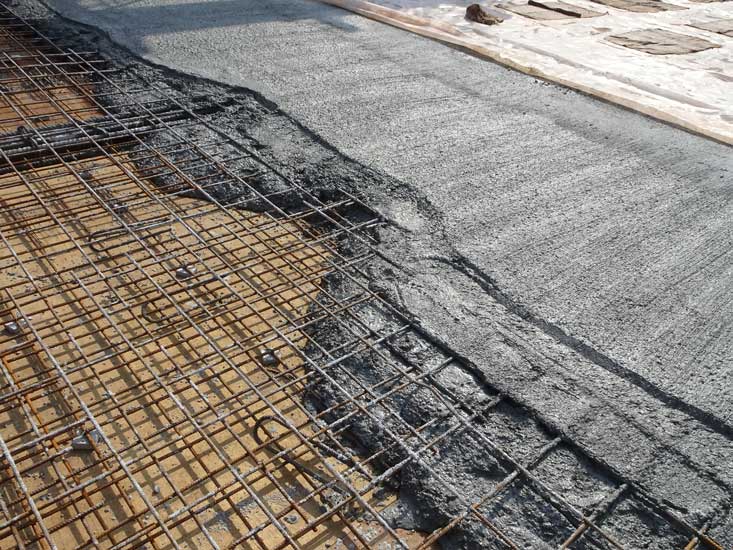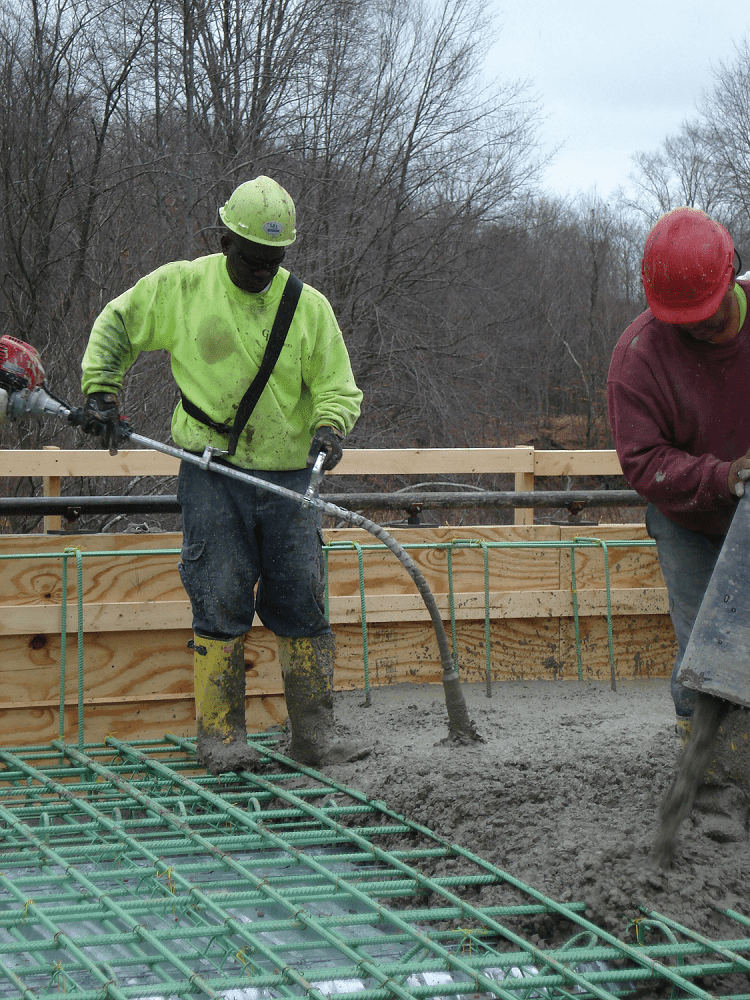The Crucial Duty of Concrete Foundation in Structural Honesty and Long Life
When it pertains to building a building, the structure is a lot more critical than you could assume. Concrete foundations give unrivaled toughness and resilience, ensuring your structure can endure numerous ecological challenges. Without a solid base, you take the chance of prospective issues like shifting or breaking, which can jeopardize safety and value. Comprehending the subtleties of concrete structures can be the key to protecting your investment for years to come. What should you take into consideration following?
Understanding the Significance of Concrete Foundations
Concrete structures are essential to the overall stability of any kind of framework, as they give the essential assistance required to hold up against different loads and environmental conditions. When you believe about constructing a home or a commercial area, the foundation is the first thing you need to consider. It works as a barrier against dampness, securing your building from water damages. A well-placed concrete structure likewise prevents settling and changing, which can result in cracks in wall surfaces and floors. You'll intend to guarantee that the foundation is effectively created and strengthened, as this affects the longevity of your structure. In addition, a solid structure can boost power effectiveness by decreasing air leaks. Keep in mind, disregarding the significance of a concrete structure can lead to expensive repair services down the line. So, spending in a high quality foundation upfront is crucial for the stability and toughness of your structure.
Advantages of Concrete Foundations for Architectural Honesty
While numerous elements add to a structure's architectural integrity, concrete structures use unmatched resilience and strength. You'll appreciate that concrete can withstand severe weather, withstanding both dampness and temperature variations. This durability implies your structure is much less likely to experience fracturing or shifting over time, which can endanger its safety.Additionally, concrete's inherent weight gives a solid base, avoiding movement throughout all-natural events like quakes or floodings. When you choose a concrete structure, you're also going with low maintenance; unlike wood, it will not rot or attract bugs, conserving you time and cash in repairs.Moreover, concrete's fire resistance uses included security, guaranteeing your framework can sustain high temperatures without substantial damages. Overall, buying a concrete foundation indicates you're focusing on the lasting security and integrity of your building, making it a smart option for any kind of building and construction task.
Typical Sorts Of Concrete Foundations
When it concerns developing foundations, recognizing the usual types of concrete structures can aid you make educated choices for your job. The most prevalent kinds include slab-on-grade, crawl area, and full cellar foundations.A slab-on-grade foundation is a basic, economical option, where a thick concrete slab is poured directly on the ground. This type functions well in cozy environments, as it decreases heat loss.Crawl room foundations raise the home slightly over ground, enabling ventilation and accessibility to plumbing and electrical systems. This layout can aid avoid moisture issues.Full basement foundations provide additional living or storage room while supplying outstanding architectural support. They require more excavation and are typically made use of in chillier climates to stop frost heave.
Elements to Take Into Consideration When Designing a Concrete Structure

Finest Practices for Installing Concrete Foundations
When you're mounting a concrete foundation, appropriate site preparation is vital to guarantee security (West Coast General Engineering commercial concrete). You'll also need to comprehend support methods to enhance stamina and durability. Do not neglect the curing process, as it plays a fundamental function in attaining a solid structure.
Website Prep Work Relevance
Although it might appear straightforward, appropriate site preparation is vital for ensuring a strong and sturdy concrete structure. Begin by getting rid of the area of any type of debris, plants, or natural product that might jeopardize the foundation's integrity. Next off, evaluate the soil kind and compaction; you may require to excavate or include products to create a secure base. Degree the ground to assure also weight distribution and prevent resolving issues later. Setting up appropriate drain systems is also important to protect against water buildup, which can deteriorate the structure with time. Mark out the foundation's measurements precisely to assist the putting process. By adhering to these actions, you'll set the stage for a successful concrete foundation that stands the test of time.
Reinforcement Strategies Discussed
As soon as the site is correctly prepared, the next action in ensuring a durable concrete foundation includes applying efficient reinforcement techniques. You ought to begin by utilizing steel rebar, which supplies tensile toughness and aids avoid splitting. Lay the rebar in a grid pattern, making certain it's raised utilizing spacers to maintain correct insurance coverage. In addition, think about using cable mesh for additional support, particularly in areas based on heavy loads. Don't neglect to link the rebar junctions securely with wire. For bigger structures, fiber support can enhance sturdiness, decreasing the threat of shrinkage cracks. Constantly comply with local structure codes and guidelines to guarantee compliance. By applying these support strategies, you'll considerably increase your foundation's strength and long life, laying a strong groundwork for your framework.
Healing Process Fundamentals
To ensure your concrete structure remedies correctly, it's crucial to preserve sufficient dampness and temperature level conditions instantly after putting. Start by covering the surface with a damp cloth or plastic bed linen to maintain wetness. This keeps the concrete moisturized, stopping splits and ensuring toughness. You ought to also keep an eye on the temperature; optimal healing conditions are between 50 ° F and 90 ° F. If it's too warm, mist the surface frequently to protect against rapid evaporation. For winter, take into consideration making use of insulating coverings to keep heat. Objective for a healing period of at least 7 days, as this is important for optimal stamina advancement. By following these ideal techniques, you'll boost your structure's resilience and durability, ensuring architectural integrity for several years to come.
Upkeep of Concrete Structures for Durability
To maintain your concrete structure strong and long lasting, regular assessments are necessary. You need to likewise guarantee efficient drainage solutions are in location to avoid water damage. If you identify any kind of cracks, resolving them quickly will save you from larger problems down the line.

Normal Examinations and Analyses
While routine evaluations and assessments may seem like a duty, they're vital for keeping the integrity of your concrete structure. By routinely looking for fractures, changes, or signs of wear, you can catch potential concerns prior to they intensify right into pricey repair work. Try to find any water pooling around the foundation or unusual settling, as these can signify underlying issues. It's likewise a good idea to keep track of any changes in your house's structure, like doors that stick or home windows that don't open efficiently. Keeping a document of your examinations helps track adjustments gradually, allowing for aggressive upkeep. Ultimately, these assessments assure your structure continues to be stable, sustaining the long life and security of your entire framework. Do not overlook this these details crucial facet of homeownership!
Reliable Drainage Solutions
Routine evaluations can disclose problems like drainage problems that may endanger your concrete structure's stability. To stop water accumulation, ensure your rain gutters and downspouts straight water away from the foundation. Installing French drains pipes can properly redirect surface and groundwater, minimizing stress on your structure wall surfaces. Additionally, grading the dirt around your home aids ensure that water streams away, instead of merging near your foundation.Consider making use of sump pumps in areas vulnerable to flooding, as they proactively remove excess water. Frequently look for obstructions in water drainage systems and clear them immediately. You'll safeguard your structure's integrity and longevity by taking these positive measures. Keep in mind, efficient drainage services are vital for maintaining a strong, resilient concrete foundation.
Motivate Fracture Repair Works
When you notice fractures in your concrete structure, resolving them promptly is important for keeping its long life. Small splits can promptly progress into larger issues, compromising the architectural honesty of your home. Routinely evaluate your foundation for indicators of damages, such as horizontal or upright cracks. If you identify any type of, do not wait-- fix them right away. You can use epoxy shots or concrete patching substances, which are reliable visit this site right here for securing fractures. Always follow the producer's instructions and consider consulting a professional for substantial damage. Remember, prompt repairs not just enhance your foundation's toughness yet likewise conserve you money in the future by protecting against much more substantial fixings down the line. Keep aggressive, and your structure will certainly remain strong and safe.
Resolving Common Concerns With Concrete Foundations
Concrete structures can deal with numerous problems gradually, making it critical to identify and resolve them without delay. Among one of the most typical problems is splitting, which can take place because of temperature fluctuations or resolving soil. If you observe cracks, it's important to analyze their size and deepness; small fractures can often be sealed, while larger ones may call for specialist evaluation.Water invasion is one more major concern. Excess moisture can lead to mold and mildew development and structural deterioration. Assurance correct drainage around your foundation to alleviate this risk. Furthermore, search for signs of changing or bowing walls, as this can indicate underlying concerns with your structure's stability.Regular examinations are basic to catch these troubles early. If you identify any worrying indications, don't be reluctant to get in touch with a foundation professional. By remaining positive, you can keep the stability and durability of your concrete structure, guaranteeing your home continues to be risk-free and safe.
Regularly Asked Inquiries
Exactly How Does Soil Type Influence Concrete Foundation Efficiency?
Dirt type substantially impacts concrete structure efficiency. If you've got expansive clay, for instance, it can trigger changing and fracturing. Sandy dirt might cause resolving. Comprehending your soil aids ensure a steady structure.
Can Concrete Foundations Be Fixed if Harmed?
Yes, you can fix broken concrete structures. Depending on the extent of the damage, methods like epoxy shot or slab jacking can restore security. It's finest to seek advice from a specialist for reliable solutions.
What Is the Common Life Expectancy of a Concrete Structure?
A concrete foundation typically lasts 30 to 100 years, relying on variables like soil problems, climate, and maintenance. You'll wish to watch on it to assure it stays in excellent form throughout its life-span.
Are There Alternative Products to Concrete for Foundations?
Yes, there are options to concrete for structures, like decorative concrete business steel, wood, and even recycled products. Each option has unique advantages and drawbacks, so you ought to consider your job's specific needs when picking the appropriate product.
Exactly How Does Environment Impact Concrete Foundation Toughness?
Climate considerably affects concrete foundation toughness (West Coast GE Concrete contractors). Extreme temperature levels, dampness, and freeze-thaw cycles can damage the material, resulting in cracks and structural concerns. You must consider regional climate problems when planning your foundation to assure long-term efficiency